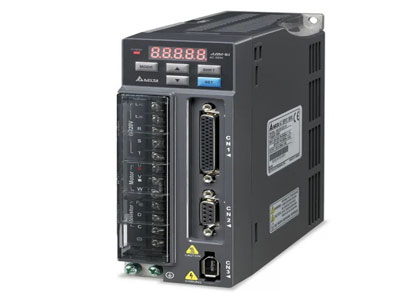Key Takeaway
Servo drives fail mainly due to winding and cable damage from wear or contamination. Regular inspections and maintenance can prevent these issues from escalating.
Overheating is another common cause. Inadequate cooling, excessive loads, or poor ventilation can contribute to this. Ensuring proper cooling systems and checking electrical connections regularly can help prevent failures. Proper maintenance is key to keeping your servo drive running reliably.
Common Causes of Servo Drive Failures
Servo drive failures can stem from multiple factors, but some causes are more prevalent than others. One of the primary reasons is poor maintenance. Neglecting to clean and inspect the drive regularly can lead to dust buildup, overheating, and worn-out components. Another common cause is improper installation, where misaligned wiring or connections can lead to short circuits or electrical surges.
Additionally, overloading the drive beyond its rated capacity can cause it to work harder than intended, leading to early wear and eventual failure. Servo drives are built for specific applications, and exceeding those limits frequently results in performance degradation. Finally, component fatigue, which occurs naturally over time, is another common cause, especially in older systems that have not been upgraded or serviced in years.

Environmental Factors Impacting Performance
Environmental conditions can significantly impact the performance and lifespan of a servo drive. Heat is one of the most damaging factors. Drives that operate in high-temperature environments without sufficient cooling mechanisms are at greater risk of overheating, which leads to internal component degradation.
Humidity and moisture also pose significant risks. Exposure to high levels of humidity can cause condensation inside the drive, leading to corrosion or short circuits. Dust and contaminants can clog air filters or find their way inside the drive, impacting its cooling system or even damaging sensitive electronic components.
The environment in which the drive operates should be monitored carefully. Installing drives in environments with temperature and humidity control or using protective enclosures can extend their operational lifespan and reduce the risk of failure.
Electrical Issues and Overvoltage
Electrical issues, particularly overvoltage, are major contributors to servo drive failures. Overvoltage occurs when the electrical supply exceeds the drive’s rated capacity. This can cause internal components, such as capacitors, transistors, or power supplies, to fail due to the excessive stress placed on them.
Similarly, voltage spikes or power surges can cause immediate damage to the drive’s electronics, rendering it non-operational. Fluctuating power supplies, common in industrial settings, can also lead to erratic behavior in the drive, impacting the overall performance of the system.
To mitigate this, it’s critical to ensure that the power supply feeding the servo drive is stable. Surge protectors or voltage regulators should be installed to absorb any electrical surges and provide a stable voltage flow. Additionally, regularly checking the electrical system for inconsistencies can help prevent unexpected failures due to overvoltage.
Overheating and Its Effects on Servo Drives
Overheating is one of the most common causes of servo drive failure. When a drive overheats, it can lead to thermal breakdown of internal components such as capacitors and resistors. These components are sensitive to high temperatures, and continuous exposure can cause them to malfunction or fail completely.
The primary cause of overheating is often inadequate cooling. Servo drives rely on fans or ventilation systems to dissipate heat, and if these systems are blocked or malfunctioning, the heat buildup can become critical. Another factor contributing to overheating is operating the drive beyond its rated power capacity, which increases the thermal load.
Ensuring proper ventilation and regular maintenance of cooling systems, such as cleaning air filters or replacing malfunctioning fans, can go a long way in preventing overheating. Keeping the drive within its operational limits also helps avoid unnecessary thermal stress.
Best Practices for Preventing Failures
Preventing servo drive failures requires a proactive approach that includes regular maintenance and environmental management. Start by monitoring temperature and humidity levels in the environment where the drive operates. Install the drive in a well-ventilated area or use an enclosure that protects it from dust and moisture.
Regular inspections and cleaning are essential. Dust and debris buildup can interfere with the drive’s cooling system and electrical connections. Make it a routine to clean the drive’s filters and check for any loose or worn-out components.
Additionally, always ensure that the drive is operating within its rated capacity. Overloading the drive will not only cause it to overheat but also shorten its operational life. Lastly, investing in voltage regulation equipment is critical for stabilizing the power supply and protecting the drive from electrical surges.
Conclusion
Understanding why servo drives fail is crucial for preventing costly downtime and ensuring smooth operations. By addressing common causes such as overheating, electrical issues, and poor environmental conditions, engineers can significantly reduce the likelihood of failure. Regular maintenance, proper installation, and taking preventive measures like voltage regulation and cooling can extend the life of your servo drives.
With careful monitoring and proactive care, you can minimize failures, ensuring that your servo drives perform optimally and consistently, helping you avoid costly repairs and replacements.
